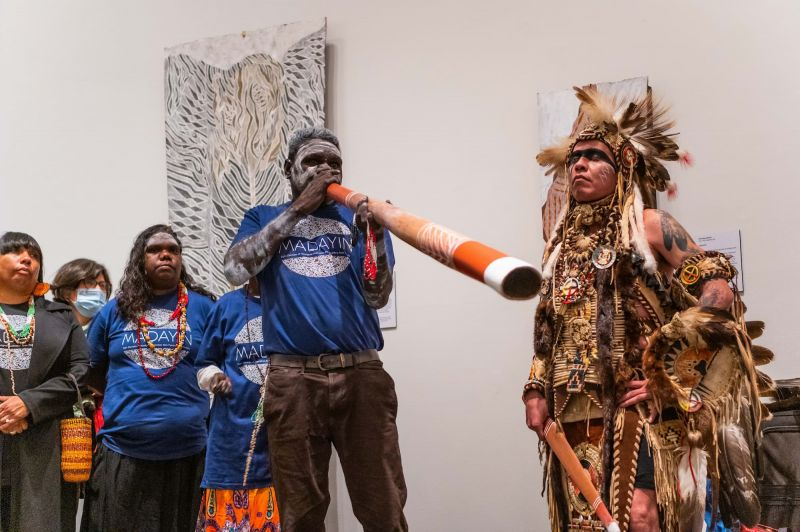
Australian arts and culture is a rich and diverse tapestry, reflecting the continent’s ancient Indigenous heritage, its multicultural immigration history, and its unique geographical landscapes. From ancient rock art to contemporary performance, and from internationally acclaimed literature to vibrant street art, Australia’s artistic and cultural expressions offer a profound insight into the nation’s identity, its stories, and its evolving place in the world.
The art and culture of Aboriginal and Torres Strait Islander peoples represent the oldest living cultures in the world, dating back tens of thousands of years. Indigenous art, in its various forms – including painting, sculpture, weaving, and body art – tells stories of the Dreamtime, ancestral beings, and the deep spiritual connection to the land. Landmark institutions like the National Gallery of Australia house significant collections of Indigenous art, recognizing its profound cultural and historical importance. Indigenous performing arts, including dance and music, continue to be vibrant and evolving forms of cultural expression, sharing stories and traditions across generations.
Australia’s multicultural immigration history has profoundly shaped its arts and culture. Waves of migrants from Europe, Asia, the Middle East, and beyond have brought with them their own artistic traditions, languages, and cultural practices, enriching the national landscape. This is evident in the diverse range of festivals, cultural organizations, and artistic collaborations that thrive across the country, celebrating the contributions of different cultural communities.
Australian literature has produced internationally acclaimed authors who have explored the unique Australian experience, its landscapes, and its social dynamics. From the iconic bush ballads of the late 19th century to contemporary novels that grapple with issues of identity, belonging, and the complexities of modern life, Australian literature offers a rich and diverse body of work. Authors like Patrick White, Nobel Prize laureate, and contemporary writers such as Kate Grenville and Richard Flanagan have contributed significantly to global literary discourse.
The Australian film and television industry, as discussed earlier, plays a crucial role in shaping and reflecting Australian culture. Australian stories, landscapes, and acting talent have gained international recognition, contributing to a distinct national cinematic identity. Documentaries, dramas, and comedies often explore themes unique to the Australian experience, from its colonial past to its contemporary multicultural society.
The performing arts scene in Australia is vibrant and diverse, encompassing theatre, dance, opera, and musical theatre. Major state-based companies present a wide range of productions, from classical works to innovative contemporary performances. Smaller independent theatre companies and dance troupes contribute to a dynamic and experimental arts landscape. Festivals like the Adelaide Festival and the Melbourne International Arts Festival showcase a wide array of local and international talent.
Visual arts in Australia encompass a broad range of styles and mediums, from traditional landscape painting to contemporary photography, sculpture, and installation art. Public galleries and private art dealers across the country showcase the work of Australian artists, reflecting diverse perspectives and creative expressions. Street art has also emerged as a significant and often politically charged form of visual culture in urban areas.
Music in Australia is incredibly diverse, reflecting the country’s multicultural influences and its vibrant contemporary music scene. From Indigenous musicians blending traditional sounds with modern genres to rock bands, electronic music artists, and classical ensembles, Australia’s musical landscape is rich and dynamic. Music festivals are a major part of the cultural calendar, attracting large audiences and showcasing a wide range of musical styles.
Cultural institutions, such as museums, galleries, libraries, and archives, play a vital role in preserving and promoting Australia’s cultural heritage. National institutions like the National Museum of Australia and the National Film and Sound Archive safeguard important artifacts and stories, making them accessible to the public.
Government funding and support through agencies like the Australia Council for the Arts are crucial for the sustainability and development of the arts and cultural sector. These agencies provide grants and funding to artists, arts organizations, and cultural initiatives across the country.
In conclusion, Australian arts and culture is a vibrant and evolving tapestry woven from its ancient Indigenous roots, its diverse immigration history, and its unique geographical context. From traditional Indigenous art and storytelling to contemporary literature, film, music, and visual arts, Australia’s creative expressions offer a rich and multifaceted understanding of the nation’s identity, its stories, and its place in the world. The ongoing support for the arts and cultural sector is essential for ensuring that this vibrant tapestry continues to thrive and reflect the ever-changing face of Australia.
External Reference: The Australia Council for the Arts is the Australian Government’s arts funding and advisory body, providing valuable information and resources on the Australian arts sector. (https://www.australiacouncil.gov.au/)



